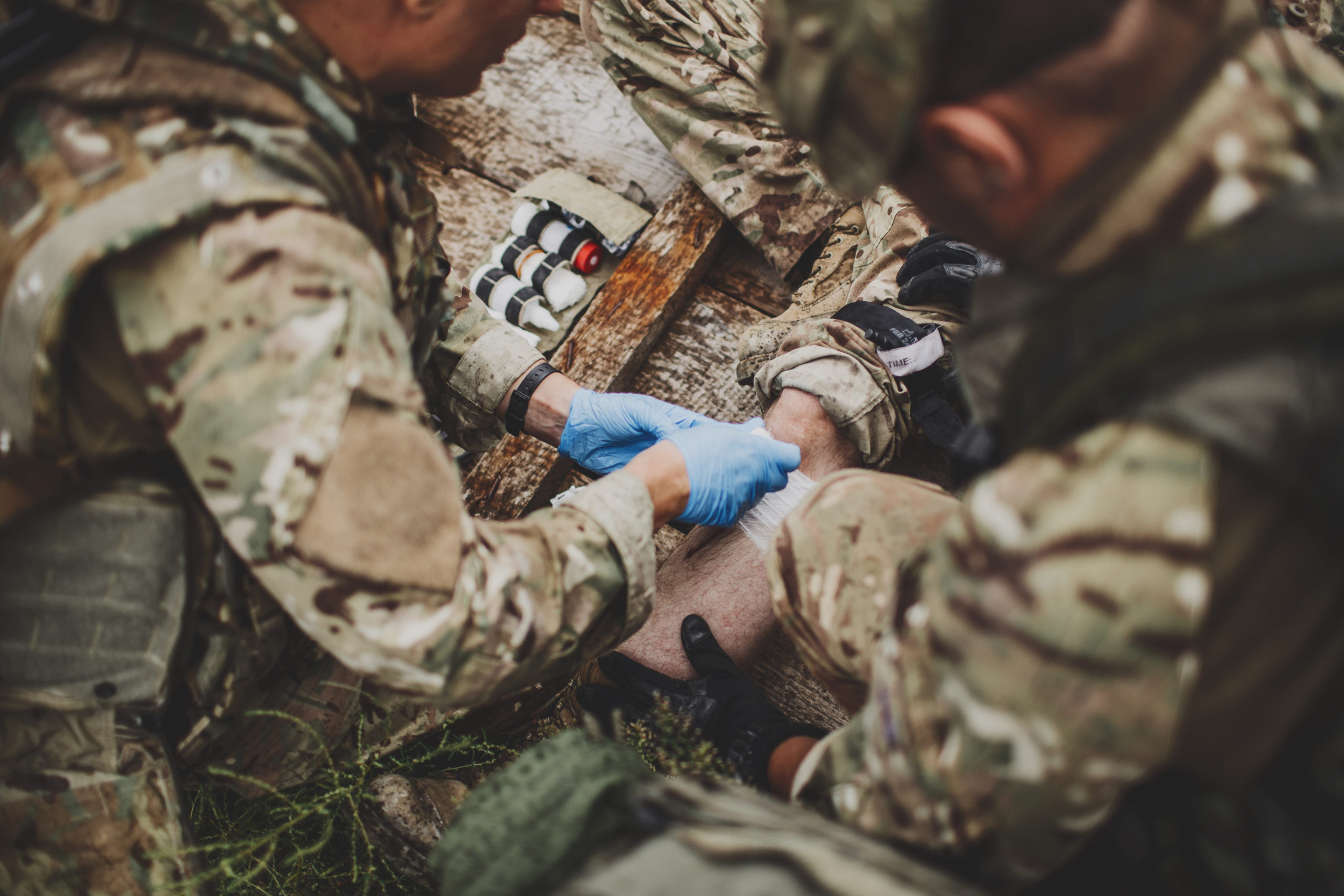This VR program is designed to be easy for you to use, quick (about 10 minutes) and totally private. You can use it in your own home, whenever you want, choosing whatever it is that you want to work on, without having to disclose anything to anyone. This VR program works with and enhances any therapy sessions, including group therapy.
To be injured in the service of our country is a very personal high price to pay. The fact that you showed up for us and paid that price is the greatest service anyone can ask of you. We are grateful for your commitment and service to our country and we pray for healing of your injury.
Our VR program is designed to help injured military veterans reduce your emotional responses to the events surrounding your injury. It can help your body heal by reducing the stress reactions so you have less stress hormones that can actually interfere with you being able to heal your injury. The cortisol cocktail of hormones is also very detrimental to the health of your whole body.
IF YOU ARE UNDER THE CARE OF A PROFESSIONAL, PLEASE CONSULT THEM BEFORE USING THIS VR PROGRAM.
This program cannot change what happened to you, but it can help change how your brain and body react, especially when the events of the injury are long past but the memories of what happened still haunt your mind and your memories.
You may even be experiencing PTSD from your injury. The symptoms of PTSD include insomnia, anger, nightmares, depression, suicidal thoughts, withdrawal, concentration problems, emotional hypersensitivity, being emotionally flat, flashbacks, and hyper vigilant, and overreactive. PTSD can be especially hard on your body and eventually take a toll on your overall health.
You can use this VR program to help feel less stress about what happened to you. All the trauma related to an injury and subsequent recovery is best addressed in this program by breaking it down into smaller pieces. That lets your brain focus on a specific set of events rather than the whole trauma all at once.
For example: If you were wounded in a battle and needed to be evacuated, operated on, shipped back home, put through rehabilitation training, and discharged from the service you would focus on one part of the trauma at a time.
The first day you use the VR program you would focus on the sights, sounds, smells and feelings of being wounded. Remember to add in the shock and fear of it. Leave the rest of the memories for later and go through the VR program with just this event.
Three days later you can use the VR program again and focus on being evacuated from the site and taken to the field hospital for treatment. Focus on the memories of the pain and fear if you were conscious. Include any responses from your family as they learned of your injury.
Be aware of how you are feeling after these two sessions in the VR program, and do not try to rush through these events.
Wait a week and use the VR program for the next part of the trauma, being operated on. Focus on the sights, sounds, smells and senses of the hospital, the realization that you require surgery and the feeling of being put under anesthesia. Focus on waking up, any pain you felt and what the outcome of the surgery was.
Three days later you can use the VR program to focus on the recovery and rehabilitation part of your trauma. Be sure to include the frustration and pain plus any trauma from the feelings of being incapacitated.
The next week you would use the VR program to focus on being sent home. This may have been incredibly stressful for you, especially if you did not want to go. Also focus on how your family responded to you when you got home. For some veterans, the reentry into the family when they are wounded and incapacitated is a great source of stress.
Stop and evaluate how you are reacting to the memories now. Is there a part of what happened that is still generating a high level of stress? You can go back to the VR program and repeat sessions on any memories that still feel too stressful.
If your injury resulted in permanent disability and pain, you could use the VR program once a week as maintenance to reduce any accumulated stress and manage your reaction to your symptoms.
You can also use the VR program to speed up your healing by focusing on whatever you feel stands in the way of your maximum recovery.
This VR program works in harmony with any counseling you may be doing, including group therapy. Be aware of what you say in counseling, and what brings the greatest negative emotional response in your sessions. Write it down and use the VR program to reduce your emotional reaction. Your counselor may even suggest some areas they feel you can work on.
Here are some other examples of statements you may want to add in the VR glasses:
No one around me understands what it’s like to be wounded
People don’t know what to say to me, so they just ignore it
My family treats me differently now
My family expects too much (or too little) from me
I feel incapacitated and restricted and my new normal just sucks
I can’t ever be like I used to be, and I can’t do what I used to do
I live in pain and I can’t stand taking that pain medication
I’m afraid I’ll get addicted to the pain medication
How am I going to support my family now?
Getting the help I need is so frustrating and I’m so fed up with the paperwork and the system
I feel angry, it’s like my country has turned its back on me
I feel like I’m a burden to my family


